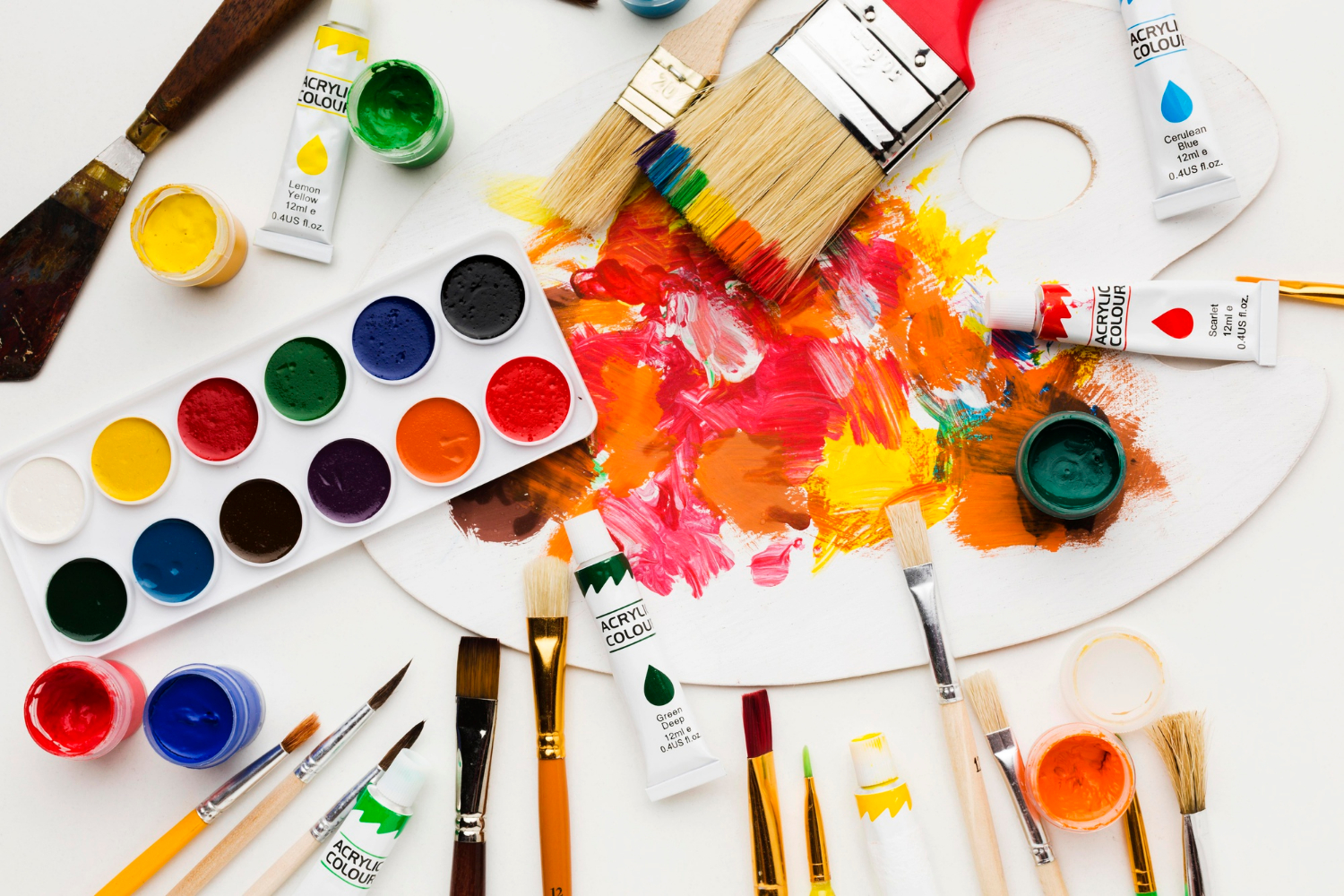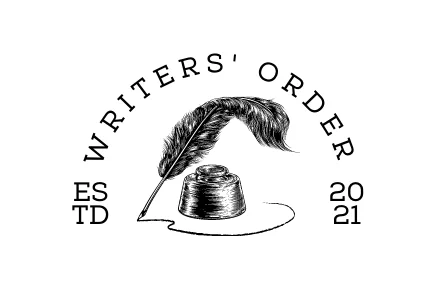You have to be the change to bring the change.

Can an Artist Succeed Without Professional Education?
Our content is reader-supported. We may earn a commission if you make a purchase through one of our links.
You don’t need to have a traditional art education to become a professional and successful artist anymore. It doesn’t matter if you are a trained artist or newcomer or an experienced artist without training, you can make it in art if you work hard and/or are smart enough for it.
You’re quite lucky to start this journey now because nowadays a lot of things are on the internet. There are a lot of resources available for (beginner) artists, so your problem might be choosing the right ones than just finding any. With that being said, listed below are some of your options.
1. Watch Videos About Art Techniques and Materials
Listen to advice from seasoned artists in whatever shape you can find. Please keep in mind that people are different and just because something worked for somebody else, it doesn’t mean that it has to for you and vice versa.
Watch progress videos, look at WIPs (work-in-progress) and pay attention to the structure of the work. Especially for beginner artists, knowing how to build a workup can be very helpful.
2. Read Beginner Books About Art
Reading books about art will help you build that artistic foundation and teach you the basics you need to know about becoming an artist.
Also, do read stories about other artists. This will help you connect with their experiences as you learn about the nitty-gritty side of becoming an artist. The stories of these artists will teach you about their struggles and will also inspire you regarding the numerous opportunities that await.
3. Join an Artist Community/Befriend Artists
It helps to join a community that shares the same interests as you. This will not only help you in your career but also assist you in your artistic journey. By meeting fellow artists, you will tap into a wealth of knowledge that can potentially take your art career to another level. Also, learn to listen to criticism. Here, you must know how to respond to criticism and differentiate criticism from personal attacks.
You will learn about various art mediums, different art styles, how to avoid making mistakes as an artist, how to price your art, and so much more.
Very importantly, you don’t have to see every video or read every book. The incredible wealth of information out there can be very overwhelming, especially if you don’t know where to start.
If that’s the case, just pick one of the resource places listed above and start there. Choose one book or one YouTube video and try what you learned there. Then work your way up from the questions that developed when trying what you learned. From there on, look up what you want or need to know. Yes, it’s good to know as much as possible, but not from the start. Build your repertoire as you go.
4. Learn Non-art-Related Skills
Although it’s a bit less obvious, you should also acquire non-art-related skills. If you want to be a professional artist, you will have to organize and manage yourself, at least for some time. As such, you should invest time into learning about the organization, time management skills, productivity, pricing, and so on.
You are planning on running a business yourself, after all. Therefore, you need to do a lot of organization and there will be nobody who will tell you how you need to do this. How much time do you spend on painting/drawing each day and how much do you use for acquiring new skills? How much time do you reserve for social media and how much is used for resting? And so on.
You are solely responsible for all of this. Often only the “hard” skills of a craft are taught, which then in practice leads to problems when people don’t know how to manage themselves. Avoid this by learning soft skills and listening to yourself. Sadly, no one routine works for everybody. You need to figure out how you work best and then apply that knowledge.
5. Take Time to Practice!
You won’t be able to draw/paint as well as an experienced artist right away. Don’t let that discourage you! It can be hard to look at the works of artists you deeply admire and not be able to create this level of art. But remember that every single artist started just like you right now.
The difference between them and you is a lot of practice and, honestly, a little more. So, be patient and practice as much as you can. Don’t be afraid to try new things, even if they look terrible at the beginning. Rather, do these things because they look bad right now.
One of the most important things in art is to practice where you fail. It can be very tempting to just do what you’re good at. And if you just want to do art for your own sake, that is fine. But if you want to make your livelihood with it, you probably should improve those weak points.
Honestly, it depends on what kind of art you create. There will always be art styles that you are not amazing at, but perhaps you don’t have to be. If you are famous for creating action paintings, you probably haven’t learned how to create hyper-realistic portraits. So, it depends on what you are going for and how you eventually earn your money.
Anyway, some things that are usually named as these weak points are anatomy, perspective, and shading. These are aspects that are hard to learn because we are both very sensitive to them and very familiar with them. All of these are integral parts of our everyday life, and we have learned to recognize when they look off. Sadly, at the same time, it can be very difficult to figure out what exactly is off and how to fix it.
So, how do you learn to recognize mistakes? Well, you practice. But how do you practice? Well, with reference pictures. For references there are two kinds: either you look for references online or you take a picture yourself. The former is better suited for locations or people you don’t have access to, while the latter allows you much more control. For example, if you are struggling to draw a hand, you can just pose yours as the one you’re drawing and then take a picture.
It’s more than okay to use references. Nobody knows how all things look by heart. Yes, there is a visual repertoire but that is built through practice, and working with references helps build it.
6. Try Out Different Kinds of Materials and Techniques Before Deciding on Your Style
There is an incredible wealth both of materials and techniques used to create art out there. Try as many of them as you can!
This is a great way of expanding your horizon to find your style and improve your art. Many materials have certain techniques that have over time been established as best practices. While that doesn’t mean that these materials can’t be used any other way, it surely is worth learning the traditional approaches.
Often it’s due to technique and not imagining that an artwork is not looking as you would like it to. So, take time to study techniques, although it can appear very tedious.
Then when you have built up a large repertoire of techniques you can choose those you like the best and stick with them. These now form your very own, personal style.
Tip: Buy shop-owned brands to save money, for example, in the case of paintbrushes. Those are most times just as good as the ones from big named brands but for just a fraction of the price. A perfect way for beginners to try out many different materials.
7. Take Pictures of Your Art
Being a professional artist, you will most likely need an online presence. And for your online presence, you of course need pictures of your art. Although even if you aren’t planning on being online a lot, you will still need to take pictures of your art. Remember to take good pictures. Taking bad pictures is one of the top 3 mistakes artists make when selling art online.
Get a Good Camera
In the beginning, your phone will do the job just fine, but after a while, you will have to look for a good camera to get high-quality pictures and videos of your artwork. Taking high-resolution pictures is vital for presenting yourself online since it’s the only way through which your audience will see your art. If your photos are blurry, the artwork pictured is automatically devalued.
There are quite some decisions to make when it comes to deciding which camera to buy. In general, there is a trade-off between price and quality (which also often comes with a need for additional knowledge and gear). A cheaper camera probably isn’t as good as a more expensive one, but if you are a beginner, a more expensive model might be too complicated for you. You have to decide where on this spectrum you currently sit.
Additionally, you also should consider how much you want/need to travel with this camera. Again there is a trade-off, this time between weight and durability. A more lightweight camera is easier to travel with but might be less durable than a heavier model. And that durability might come in handy when traveling. Also, think about how weatherproof your camera needs to be.
When you have decided on which features you want, you can now choose a camera that suits your needs.
8. Join Social Media
Instagram, for example, is a good and free way to show your art to lots of other people. Just don’t expect too much attention at the beginning. It can take months or even longer until you will start growing your Instagram audience. To be honest, it might never happen.
There is no guarantee of success on social media. It could be that your art is amazing, but you never manage to reach the people that share your taste. Social media followings are shaped by algorithms and how much each user plays to them, not necessarily how good the user’s content is. So don’t be discouraged if your Instagram account isn’t doing well. Just because you don’t have many followers, it doesn’t mean that your art isn’t great.
So, as the most important piece of advice here, don’t tie your worth as an artist to the size of your social media following. Not having a large following doesn’t make you a bad artist or your art not valuable.
Of course, there are other social media platforms besides Instagram (although it’s by far the most popular choice for artists). Do your research both about the platform itself (what kind of posts it allows, what kind of posts it prefers, and so on.) and the respective audience you find there. Then you can make an informed choice on which platform you want to showcase your art. Being active on a social media platform can be a lot of work, so choose wisely.



